National Grid
Safety instructions for work on or near high voltage overhead lines (NSI 4)
The challenge
As a preferred supplier to National Grid, our challenge was to create engaging Health and Safety training courses from a library of seventeen text-heavy safety rules and working procedures manuals.
Based on their formal National Safety Instructions (NSIs), the series included a safety-critical course for overhead lines engineers working on National Grid towers on how to safely apply earthing to protect staff and contractors from the dangers of High Voltage electricity.
Our solution
Our solution includes a mix of the following key features:
- A guide or ‘expert’ to assist the learner throughout the course
- Clicks (rather than dragging) for interactions
- Minimal text, where appropriate
- Safety Warnings that have to be seen/heard before moving on
- An interactive assessment (as per the guided practice) but without the hints and guidance available in the course activities
- Course to be broken down into three sections (Presentation, Guided Practice, and Interactive Assessment)
- The guided practice is the main section for practical application
- A ‘toolbox’ from which learners select the correct tools for the job
The Guide
Designed to grab the learner’s interest and hold their attention, the guide is on hand for advice and tips at the presentation stage, as well as information not crucial to learning. ‘He’ appears in a pop-up box which the learner can click to both open and close, allowing them to control the pace of the learning.
Extra info button
When a greater depth of information is required for senior engineers this icon appears.The learner clicks to view information that is specific to a ‘Senior Authorised Person’ learner, before moving on.
Who is it for?
System requirements
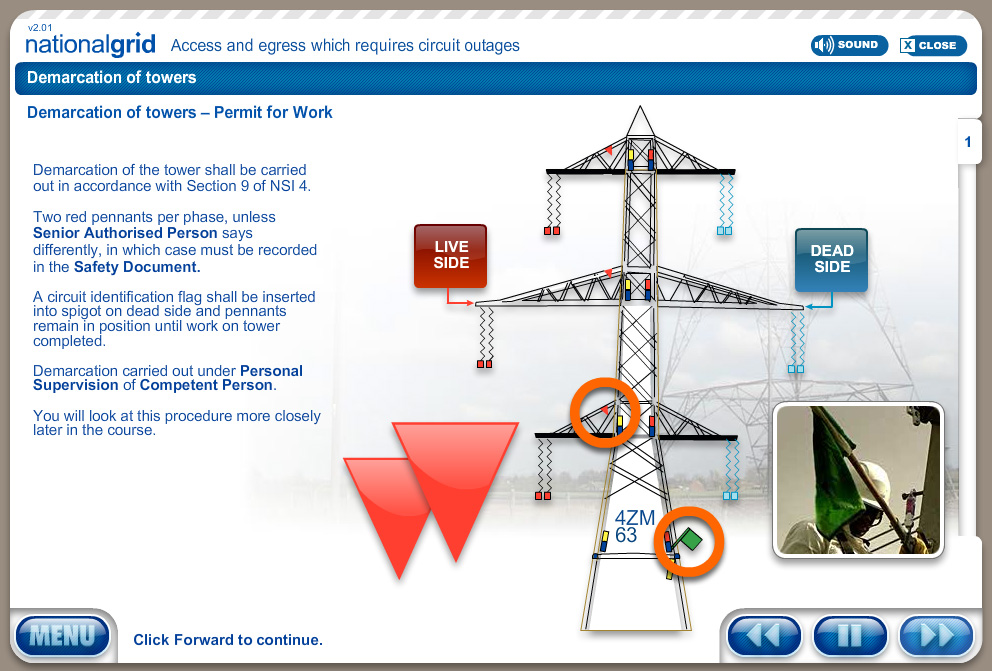
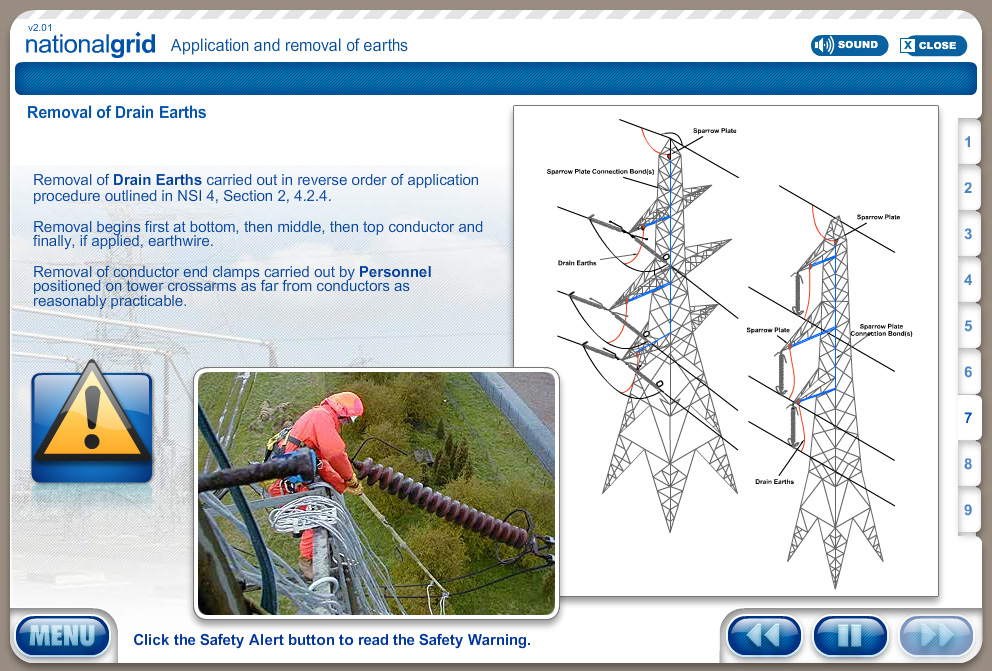
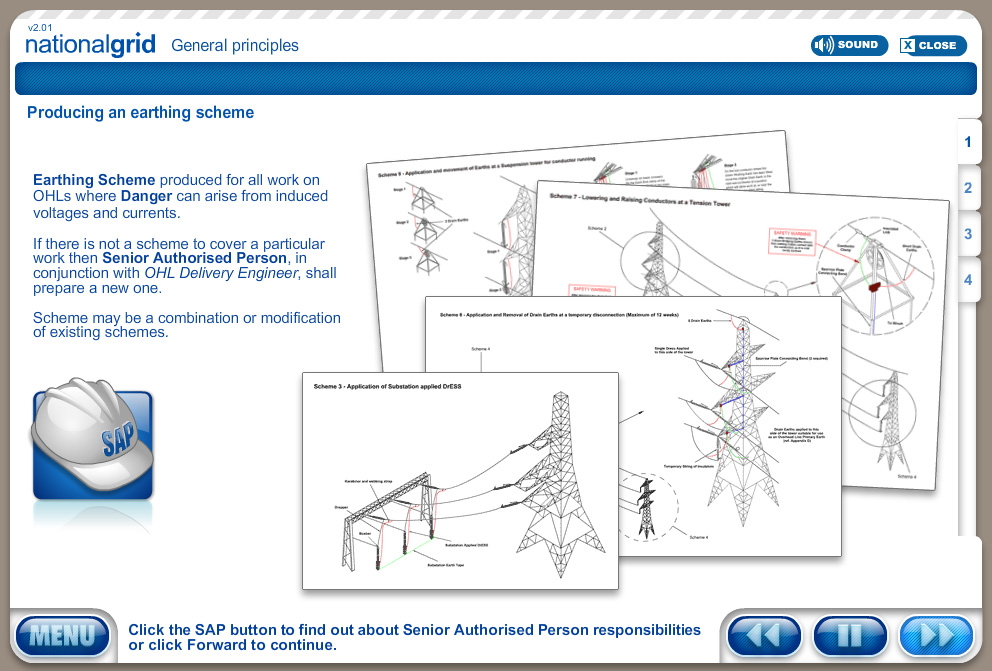
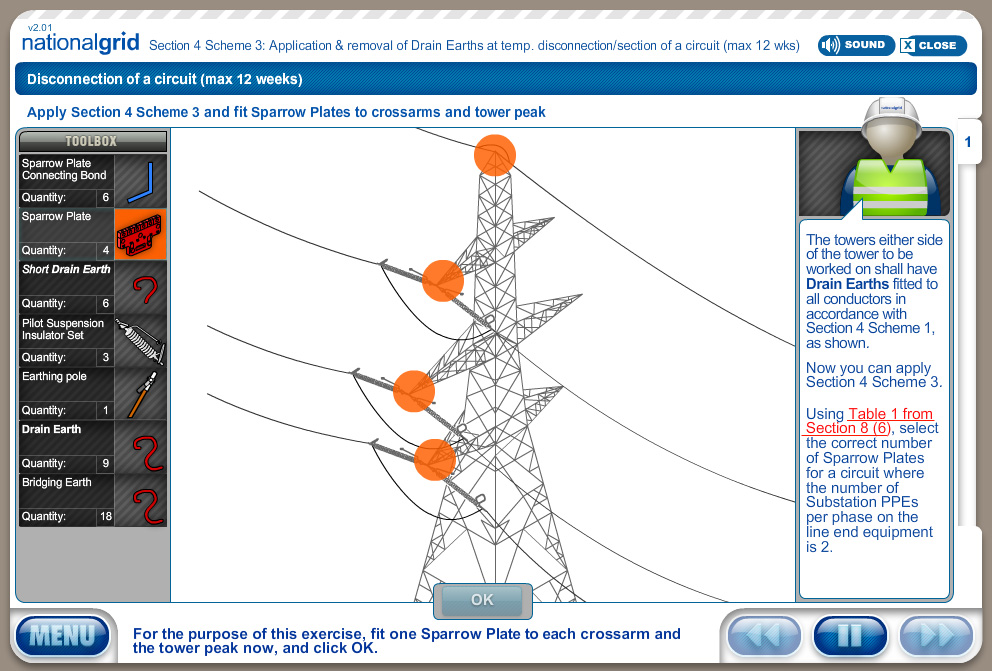
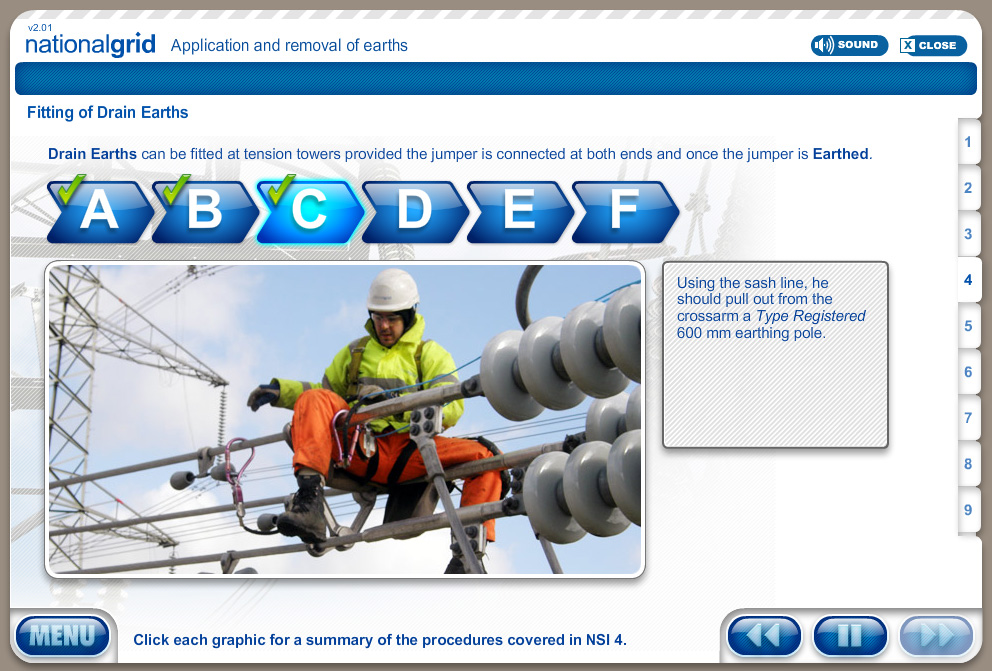
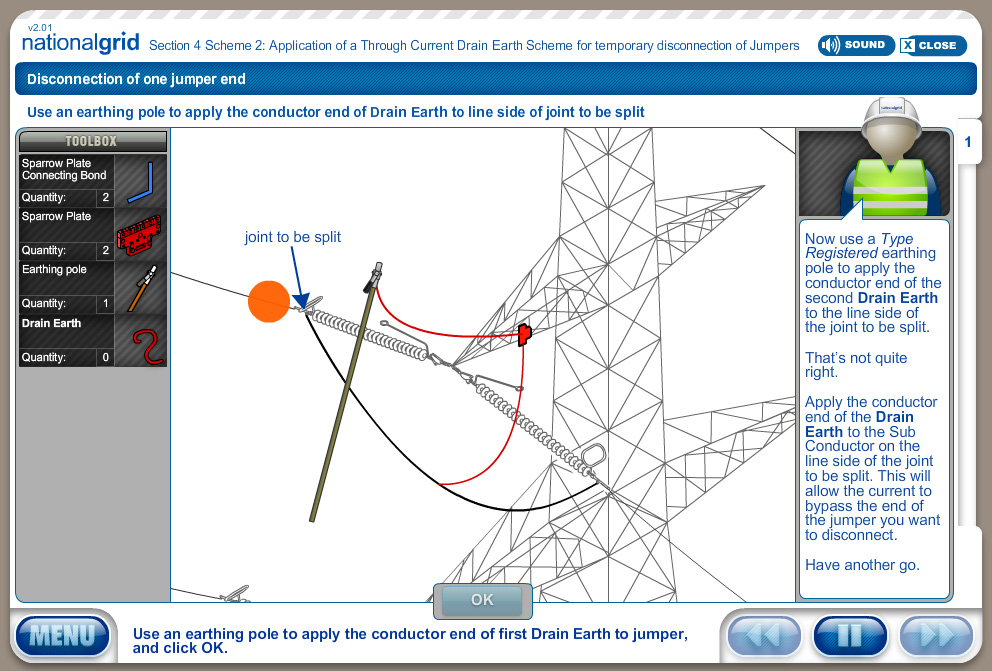
“The quality of TNA material has been consistently high, the courses rich with outstanding content” – Martin Ness, Senior Specialist – Transmission Authorisations & Ops Safety, Eakring Academy
The toolbox
In the ‘practical’ part of the course the learner is presented with a diagram of a tower or sequence of towers he is expected to make safe for work before completing a specific procedure using items from the toolbox. The toolbox displays the type and number of items available for each task.
During the guided practice, when an item from the toolbox is needed, the item will glow and the learner clicks to select it. The location where the tool or item of equipment must be used is then highlighted on the diagram and the user clicks again to apply it.
Measuring understanding
Having completed the guided practice following the correct sequence of actions to carry out a specific procedure on a tower safely, the learner can then proceed to the assessment to demonstrate what he has learnt. This comprises a mix of standard multiple choice questions and ‘practical’ exercises drawn randomly from a pool.
For the practical exercises, the guide is no longer available to provide hints and advice, and the highlights indicating the correct tool or item of equipment to use, and the location it should be applied have been removed. To further test the learning, the toolbox may contain certain ‘red herring’ items not required for the task. The quantity of each item available is also set higher than the quantity required.
